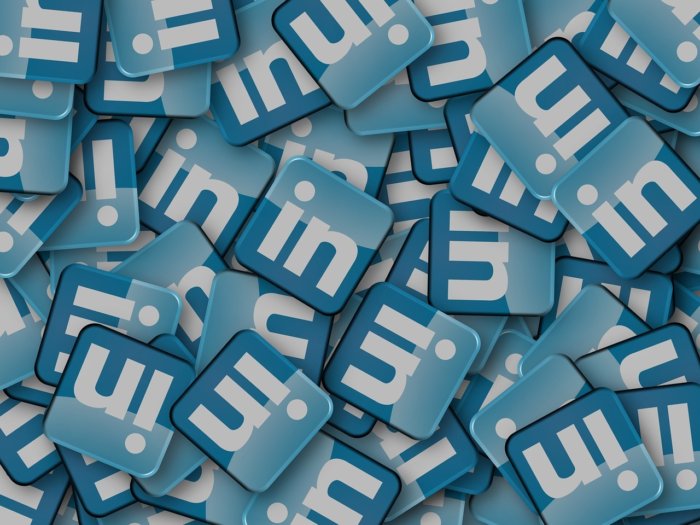Use LinkedIn a lot? Read its new privacy policy — carefully.


He who pays plays. That seems to be the underlying thought behind LinkedIn’s new privacy policy and user agreement, both of which were updated Friday (April 21). And it’s an important thought to remember before you use your employer-paid-for LinkedIn account to investigate and/or apply for jobs with your company’s competitors. (Note: The changes aren’t slated to go into effect until June 7.)
“You own your LinkedIn personal account, but we clarified that when others (such as your employer) purchase premium features for you to use, in addition to having the right to stop your access to those premium features, your employer also gets access to reports on your usage of those premium features,” LinkedIn said. “If the services were purchased by another party for you to use (e.g. Recruiter seat bought by your employer), the party paying for such service has the right to control access to and get reports on your use of such paid service.”
Later on, the privacy policy appears to exclude job hunting from the data shared with an employer. (And by the way, I am not cleaning up the typos and errors in syntax that riddle these documents.) “We understand that certain activities such as job hunting and personal messages are sensitive and so we do not share those with your employer unless you choose to share it with them through our Services (for example, by applying for a new position in the same company or mention your job hunting in a message to a co-worker through our Services).”
That means that users need to be extra careful before clicking on the standard agreements, to make sure that they’re not reflexively agreeing to share job-hunting details with their current paycheck-generator.
Another thing to consider — which wasn’t addressed in LinkedIn’s new documents — is whether you are sharing information that might violate your employer’s default confidentiality agreement. As a technology journalist, I have found many gifts buried in IT people’s LinkedIn profiles.
For example, when researching a vendor, I have frequently found IT professionals writing in detail about a problem they solved. The profile will mention a horrible problem that happened, specifying the type of system error and the date it occurred and all of the damage that resulted. Then the IT pros detail how they fixed it. Many of these postings are just waiting to be found by a class-action attorney.
When you sign a confidentiality agreement, there is rarely an exception for LinkedIn bragging. For that matter, there’s also not an exception for such detailed bragging in a job interview, but at least most job interviews aren’t transcribed and then posted for search engine spiders. Just a thought.
Back to the LinkedIn changes. Most of the changes were standard fare, but a few were worth noting. This passage from the user agreement summary, for example, might be awarded Best Hypocritical Oath: “We added that our restriction against creating a false identity on our Services is not waived just because LinkedIn may rarely allow a clearly fictional profiles in connection with a promotional campaign that it has approved.”
This next policy is understandable, but the phrasing still has that “take your ball and go home” quality: “If you object to any changes, you may close your account.” How nice of LinkedIn to give its customers permission to leave.
But if you do choose to leave, do you think your data will be wiped? Think again. “We retain your personal data even after you have closed your account if reasonably necessary to comply with our legal obligations (including law enforcement requests), meet regulatory requirements, resolve disputes, maintain security, prevent fraud and abuse, enforce our User Agreement, or fulfill your request to unsubscribe from further messages from us.”
Given the catch-all “enforce our user agreement,” it’s probably not safe to assume that anything will ever be deleted. Just adhere to the primary social media law and you’re fine: If it’s embarrassing in any way, assume it’s permanent.
Then there is the reminder of all of the ways LinkedIn will track you forever more.
“If you opt to import your address book, we receive your contacts (including contact information your service provider(s) or app automatically added to your address book when you communicated with addresses or numbers not already in your list). If you sync your email or calendars with our Services, we will collect your email header and calendar meeting information (e.g. times, places, attendees and contacts). We receive personal data about you when you use the services of our customers and partners, such as prospective employers and applicant tracking systems providing us job application data,” the new privacy policy said. “We log usage data when you visit or otherwise use our Services, including our sites, app and platform technology (e.g., our off-site plugins), such as when you view or click on content (e.g., learning video) or ads (on or off our sites and apps), perform a search, install one of our mobile apps, share articles or apply for jobs. We use log-ins, cookies, device information and internet protocol (“IP”) addresses to identify you and log your use. We use cookies and similar technologies (e.g., web beacons, pixels, ad tags and device identifiers) to recognize you and/or your device(s) on, off and across different Services and devices. When you visit or leave our Services (including our plugins or cookies or similar technology on the sites of others), we receive the URL of both the site you came from and the one you go to next. We also get information about your IP address, proxy server, operating system, web browser and add-ons, device identifier and features, and/or ISP or your mobile carrier. If you use our Services from a mobile device, that device will send us data about your location.”
To be fair, this is not even close to the worst privacy policy I’ve seen. But given how much data many IT people pour into LinkedIn — and, yes, LinkedIn messaging absolutely counts — it’s definitely worth a sober read.










